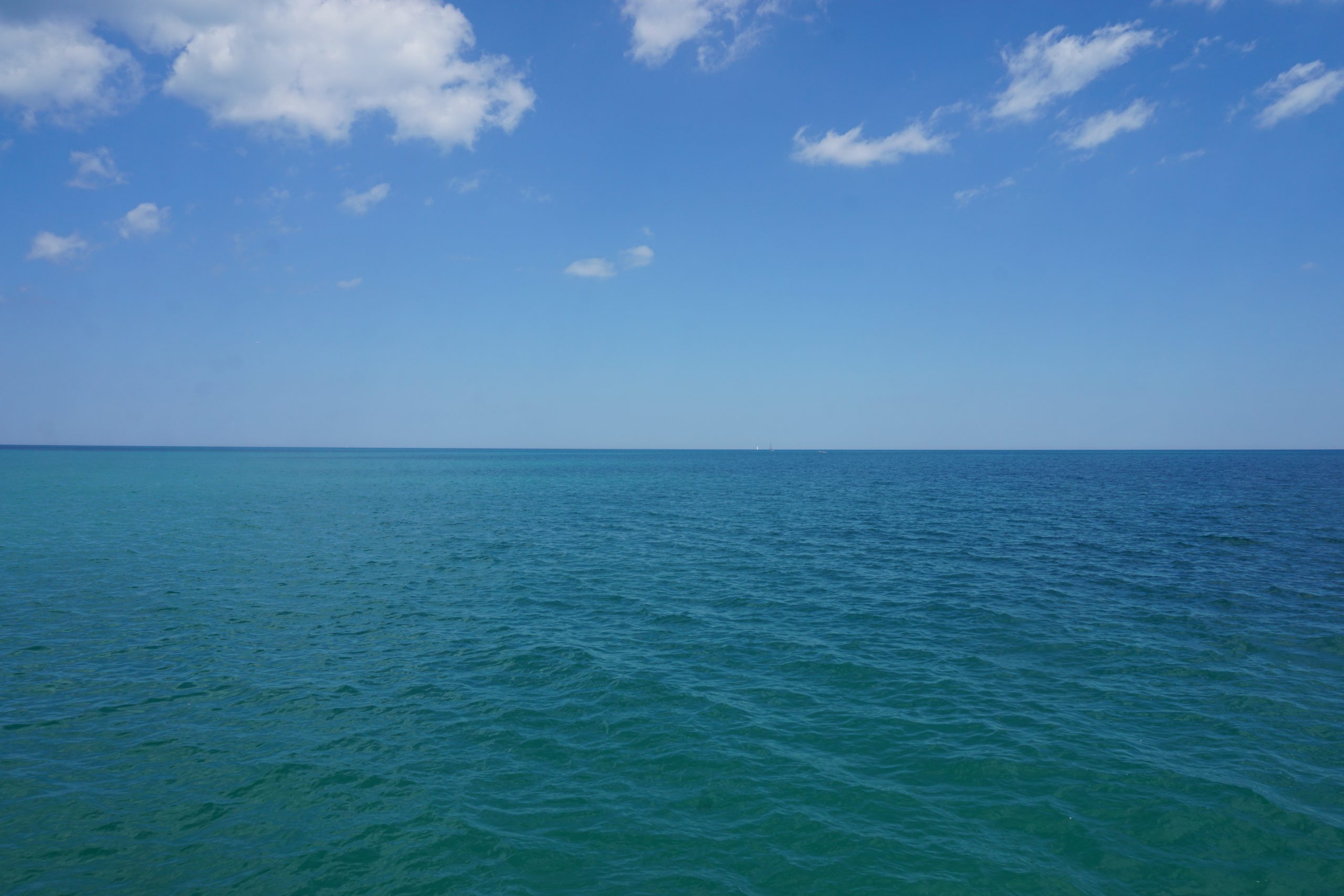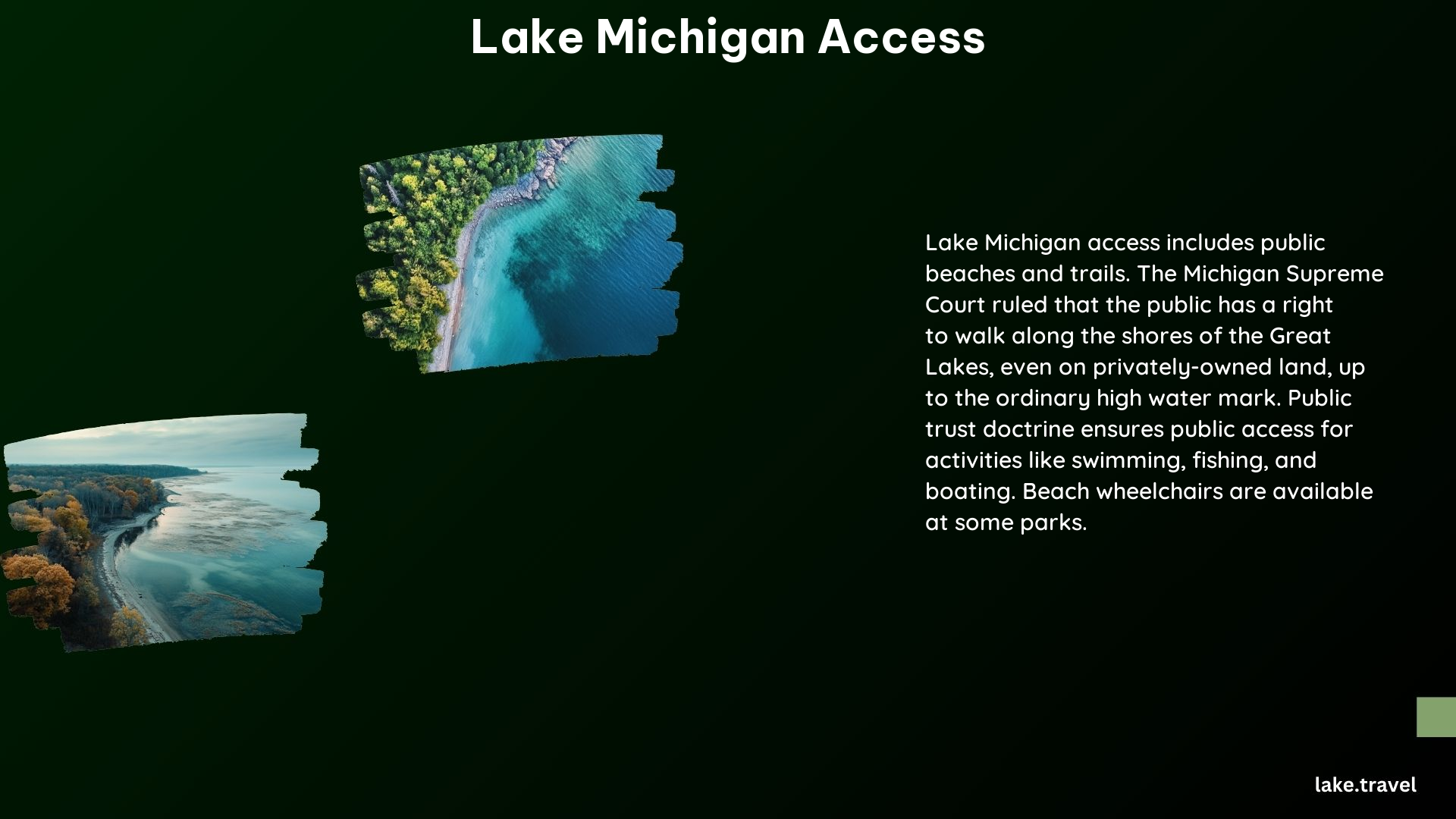Lake Michigan offers a wealth of recreational opportunities, from swimming and boating to fishing and hiking. However, navigating the public access points and understanding the regulations surrounding private property can be a challenge. In this comprehensive guide, we’ll explore the key details you need to know to make the most of your Lake Michigan experience.
Public Trust Doctrine and Ordinary High Water Mark

The public’s right to access and use the Great Lakes, including Lake Michigan, is governed by the Public Trust Doctrine. This legal principle holds that the state holds the Great Lakes in trust for public use, ensuring access to the shoreline for activities like walking, hunting, fishing, and navigation.
The boundary between public and private property along the Lake Michigan shoreline is defined by the Ordinary High Water Mark (OHWM). The OHWM is the point on the shoreline where the presence and action of the water leave a distinct mark, and the public trust zone extends up to this mark.
Public Access Points

Managed Park Beaches
Indiana has several managed park beaches open to the public, operated by local, state, and federal departments. These beaches offer amenities like parking, restrooms, and camping, making them popular destinations for beachgoers. Some of the notable managed park beaches include:
- Indiana Dunes National Park
- Indiana Dunes State Park
- Whihala Beach
- Marquette Park
Lake Michigan Recreation Area
The Huron-Manistee National Forests provide 10 miles of trails accessible from the Lake Michigan Recreation Area or Nurnberg Road Trailhead. These trails offer stunning views of the lake and opportunities for hiking, birdwatching, and nature exploration.
Hamlin Lake Access
Hamlin Lake, located on the eastern side of Lake Michigan, offers public access points for boating, fishing, and other water-based activities.
Private Property Rights and Regulations
While the public has the right to access the shoreline up to the OHWM, private property rights must also be respected. Local governments have implemented regulations to address issues like overcrowding, erosion, and noise pollution.
Keyhole Development Regulations
Local governments can limit keyhole developments, which involve using a lakefront lot to provide access to larger developments away from the lake. This helps mitigate the impact of these developments on the shoreline and surrounding areas.
Riparian Lot Use Regulations
Municipalities can establish regulations for the use of riparian lots, which are properties that directly border the lake. These regulations may include requirements for lot width and limits on the number of watercraft per dock.
Additional Resources
If you have questions about public trust boundaries or recreational activities on Lake Michigan, the Indiana Department of Natural Resources (DNR) Division of Law Enforcement District 10 Office is a valuable resource. You can contact them at 219-879-5710 or icodist10@dnr.IN.gov.
The Michigan League of Conservation Voters is another organization that advocates for protecting Michigan’s natural resources and public access to the Great Lakes.
Important Reminders
When enjoying Lake Michigan, it’s essential to respect private property rights and comply with state and local ordinances and regulations. Additionally, always check the weather and lake conditions before visiting to ensure a safe and enjoyable experience.
By understanding the public access points, private property rights, and relevant regulations, you can make the most of your Lake Michigan adventure while respecting the delicate balance between public and private interests.
References:
– Indiana Department of Natural Resources
– Michigan League of Conservation Voters
